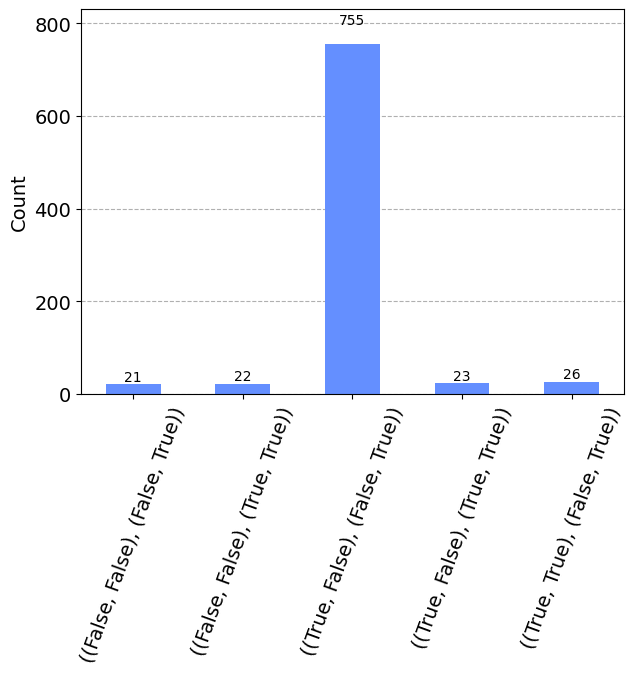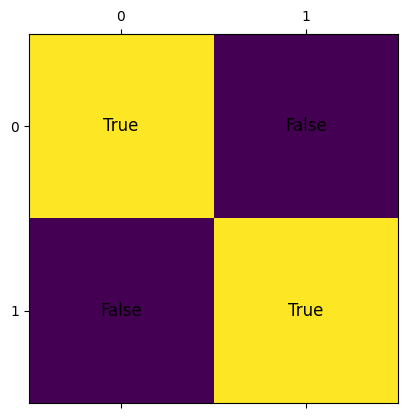Run Qlasskit circuits in DQPU#
In this notebook we show how to use DQPU to simulate a quantum circuit created using the qiskit library.
First, we import needed libraries, included the dqpu qiskit backend DQPUBackend.
from qiskit import QuantumCircuit, transpile
from dqpu.backends.qiskit import DQPUBackend
from qlasskit import qlassf, Qmatrix
from qlasskit.algorithms import Grover
Then we create a Grover search instance, searching for the solution of a 2x2 sudoku.
@qlassf
def sudoku_check(m: Qmatrix[bool, 2, 2]) -> bool:
constr = m[0][0]
sub0 = m[0][0] ^ m[0][1]
sub1 = m[1][0] ^ m[1][1]
sub2 = m[0][0] ^ m[1][0]
sub3 = m[0][1] ^ m[1][1]
return sub0 and sub1 and sub2 and sub3 and constr
qc = Grover(sudoku_check)
# qc.export().draw('mpl')
And now we instantiate the DQPUBackend; we also need to call load_account in order to load a NEAR wallet account created by near-cli (https://docs.near.org/tools/near-cli) using this command
near create-account ACCOUNT_NAME.testnet --useFaucet
backend = DQPUBackend()
backend.load_account("dqpu_alice.testnet")
Now we transpile the circuit and we call the run method: this will send the quantum circuit along with a reward to the smart contract on the NEAR blockchain. Someone will simulate it for us, and a verifier will check for the result.
circ = transpile(qc.export(), backend)
job = backend.run(circ, shots=1024)
Calling job.status() we wait until the job turns into EXECUTED status.
print(job.status())
JobStatus.RUNNING
And finally we get the result from the smart contract and we plot it.
counts = job.result().get_counts(circ)
counts_readable = qc.decode_counts(counts, discard_lower=20)
from qiskit.visualization import plot_histogram
plot_histogram(counts_readable)

import matplotlib.pyplot as plt
def draw_matrix(matrix):
fig, ax = plt.subplots()
ax.matshow(matrix, cmap="viridis")
for i in range(len(matrix)):
for j in range(len(matrix[0])):
ax.text(
j,
i,
str(matrix[i][j]),
va="center",
ha="center",
fontsize=12,
color="black",
)
plt.show()
m_res = list(filter(lambda x: x[1] > 500, counts_readable.items()))[0][0]
draw_matrix(m_res)

